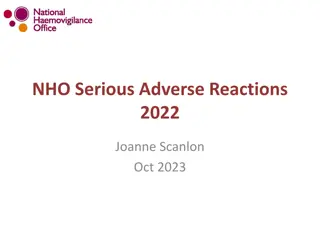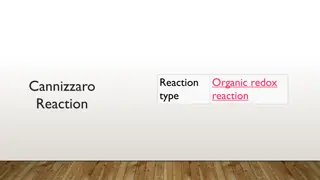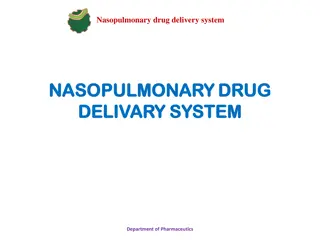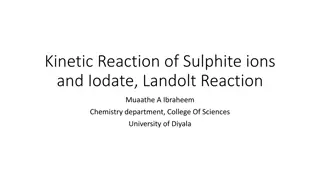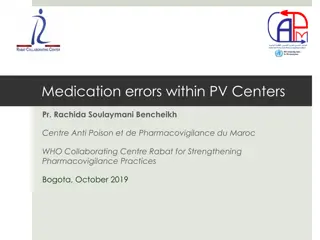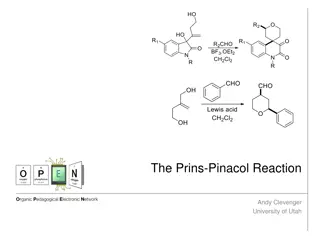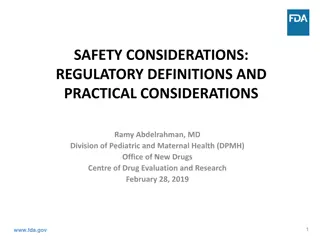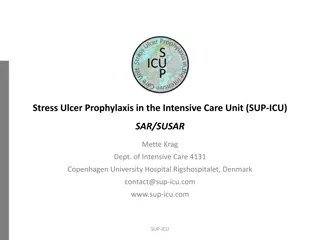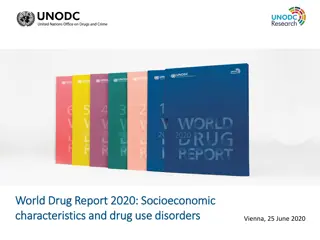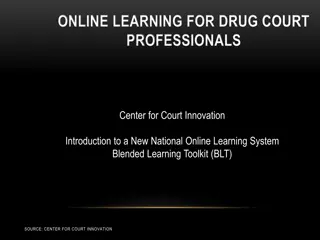Enhancing Adverse Drug Reaction Information
Drug label improvement strategies discussed at the PSI Conference in 2017 by Sally Lettis from GlaxoSmithKline. The presentation covers current labeling practices, limitations, problems, and proposed solutions regarding adverse drug reactions. Different approaches in the US and EU are compared, highlighting the need for clearer and more comprehensive information to aid healthcare professionals in the safe and effective use of medications.
Download Presentation

Please find below an Image/Link to download the presentation.
The content on the website is provided AS IS for your information and personal use only. It may not be sold, licensed, or shared on other websites without obtaining consent from the author.If you encounter any issues during the download, it is possible that the publisher has removed the file from their server.
You are allowed to download the files provided on this website for personal or commercial use, subject to the condition that they are used lawfully. All files are the property of their respective owners.
The content on the website is provided AS IS for your information and personal use only. It may not be sold, licensed, or shared on other websites without obtaining consent from the author.
E N D
Presentation Transcript
Improving Adverse Drug Reaction Information in Product Labels PSI Conference May 2017 Sally Lettis GlaxoSmithKline
Disclaimer The views and opinions expressed in the following slides are those of the individual presenter and should not be attributed to any organization with which the presenter is employed or affiliated.
Outline Current Labelling Practice Current Labelling Limitations The problem to solve The proposed solution Presentation title 4
Current Labelling Practice Product labels are intended to provide health care professionals with clear and concise prescribing information that will enhance the safe and effective use of drug products. Presentation title 5
Current Labelling Practice: US Product Label Quantitative approach used in the Adverse Reactions section Incidence of common ADRs presented Common defined as an ADR that occurs at or above a specified incidence e.g. >=3% A comparator must be provided, except in exceptional circumstances. Typically, a single ADR table is included; however, more than 1 can be included when the ADR profile differs substantially from one setting or population to another Presentation title 6
Current Labelling Practice: EU SPc ADRs (from RCTs) placed into frequency categories Convention for classification: very common (1/10), common (1/100 to <1/10), uncommon (1/1,000 to <1/100), rare (1/10,000 to <1/1,000), and very rare (<1/10,000); (CIOMS III and V) Comparator typically not included Category based on crude incidence on drug. Studies included don t need common comparator For drugs for long-term use, there is no representative duration; in practice, studies of differing durations are combined together Only in exceptional cases is more than 1 table included for different populations Presentation title 7
Current Labelling Limitations: The issue with no comparator data in label Disease Severity Duration Incidence on drug Category Incidence on Comparator - 1.7% 3.3% 2.6% - - X X X X Y X+Y Moderate Moderate Severe 3 months 6 months 12 months Pooled Pooled Pooled 0.6% 1.5% 6.3% 3.0% 0.5% 1.0% Uncommon Common Common Common Uncommon Common In label it is an ADR and is common Heterogeneity? Appropriate to combine? Helpful for patient? If two similar drugs tested in different populations very different incidences with no comparator data to contextualise Presentation title 8
Current Labelling Limitations: The issue with crude pooling Data presented is based on crude pooling of data across multiple studies: pooling data as if from a single study Can lead to Simpson s Paradox : When studies combined, trend seen in the individual studies either disappears or is reversed Why? Can result in an overall baseline risk that is different among treatment groups due to differing randomization allocations within a study and different study populations across studies Differences that could affect the incidence include age, sex, race, medical practice, differing time on study Common for reporting proportions with an ADR in labels Not a new issue (Chuang-Stein and Beltangady (2010)) E.g. Cochran-Mantel-Haenszel to produce a common odds ratio across strata If used, applied in Integrated Summaries of Safety Too complicated for Product Labels which revert to crude incidences
Current Labelling Limitations: Example showing misleading incidence proportion from crude pooling New treatment, n/N (%) Placebo, n/N (%) Total patients in study Phase 2 study Phase 3 study 30/300 (10%) 133/700 (19%) 200/500 (40%) 10/100 (10%) 67/350 (19%) 200/500 (40%) 400 1050 Phase 3 study in refractory patients Incidence proportion: crude pooling 1000 2450 363/1500 (24%) 277/950 (29%) N = total number of patients in the group; n = the number in the group that experienced the event The last row gives the impression the new drug has a beneficial effect, though the AE incidences are equal in each study. If you were to do a statistical test -> p=0.007
Current Labelling Limitations: Why did crude pooling go wrong? New treatment, n/N (%) Placebo, n/N (%) Total patients in study Allocation Ratio Phase 2 study Phase 3 study 30/300 (10%) 133/700 (19%) 10/100 (10%) 67/350 (19%) 400 1050 3:1 2:1 Phase 3 study in refractory patients Incidence proportion: crude pooling 200/500 (40%) 200/500 (40%) 1000 1:1 2450 363/1500 (24%) 277/950 (29%) N = total number of patients in the group; n = the number in the group that experienced the event Studies with uniformly lower ADR proportions (e.g. Phase 2) have more subjects on new treatment than placebo
The problem to solve: So what do we do? We can see what the issue is How should we present adjusted proportions? Conclusions from crude pooling misleading Meta-analytic techniques: e.g. Cochran-Mantel-Haenszel weights Not easy for non-statistician to understand 16Aug2016 12 CBI s Pharmacovigilance Final Rule Summit on IND 2016
The Proposed Solution: A better way to go Study-size Adjusted Percentages New treatment, n/N (%) Placebo, n/N (%) Total Proportion of total patients in study w1 = 400/2450 (16%) w2 = 1050/2450 (43%) w3 = 1000/2450 (41%) patients in study Phase 2 study 30/300 (10%) 10/100 (10%) 400 Phase 3 study 133/700 (19%) 67/350 (19%) 1050 Phase 3 study in refractory patients Incidence proportion from crude pooling 200/500 (40%) 200/500 (40%) 1000 363/1500 (24%) 277/950 (29%) 2450
The Proposed Solution: A better way to go Study-size Adjusted Percentages New treatment, n/N (%) Placebo, n/N (%) Total Proportion of total patients in study w1 = 400/2450 (16%) w2 = 1050/2450 (43%) w3 = 1000/2450 (41%) patients in study Phase 2 study 30/300 (10%) 10/100 (10%) 400 Phase 3 study 133/700 (19%) 67/350 (19%) 1050 Phase 3 study in refractory patients Incidence proportion from crude pooling Study-size- adjusted incidence proportions 200/500 (40%) 200/500 (40%) 1000 363/1500 (24%) 277/950 (29%) 2450 w1 x (30/300) + w2 x (133/700) + w3 x (200/500) = 26% w1 x (10/100) + w2 x (67/350) + w3 x (200/500) = 26%
Comparison of Weights for New Treatment New treatment n/N (%) Study Size Weights in Crude Pooling = Proportion of total patients on new drug Weights in Study sized pooling = Proportion of patients in study Weights using CMH aj = (n1jn2j)/ (n1j+n2j) w1 = a1/ aj 13% Study 1 30/300 (10%) 400 w1 = 300/1500 20% w1 = 400/2450 16% w2 = a2/ aj 42% Study 2 133/700 (19%) 1050 w2 = 700/1500 47% w2 = 1050/2450 43% w3 = a3/ aj 45% Study 3 200/500 (40%) 1000 w3 = 500/1500 33% w3 = 1000/2450 41% N 1500 2450 w1 x (30/300) + w2 x (133/700) + w3 x (200/500) = 24% w1 x (30/300) + w2 x (133/700) + w3 x (200/500) = 26% w1 x (30/300) + w2 x (133/700) + w3 x (200/500) = 27% 15 Study Adjusted Size and CMH weights same for each treatment; Crude pooling weights are not
Comparison of Weights for Placebo Placebo n/N (%) Study Size Weights in Crude Pooling = Proportion of total patients on placebo Weights in Study sized pooling = Proportion of patients in study Weights using CMH aj = (n1jn2j)/ (n1j+n2j) w1 = a1/ aj 13% Study 1 10/100 (10%) 400 w1 = 100/950 11% w1 = 400/2450 16% w2 = a2/ aj 42% Study 2 67/350 (19%) 1050 w2 = 350/950 37% w2 = 1050/2450 43% w3 = a3/ aj 45% Study 3 200/500 (40%) 1000 w3 = 500/950 53% w3 = 1000/2450 41% N 950 2450 w1x (10/300) + w2 x (67/350) + w3 x (200/500) = 29% w1 x (10/100) + w2 x (67/350) + w3 x (200/500) = 26% w1 x (10/100) + w2 x (67/350) + w3 x (200/500) = 27% 16 Study Adjusted Size and CMH weights same for each treatment; Crude pooling weights are not
Current labelling limitations: The Issue with Rule of 3 If ADR not observed in clinical trials but determined to be causally related post authorization based on spontaneous reports, Rule of 3 used to estimate category using sample sizes from clinical trials If X is number of patients exposed to drug in all relevant clinical trials, then frequency category would be 3/X, the upper limit of a 95% CI for the true incidence proportion of the event in question This method estimates the incidence proportion by the upper end of a range of plausible values for the incidence proportion. By doing so, ADRs that were never reported in clinical trials can be assigned to a frequency category that is higher than the category for ADRs that were reported in clinical trials. Anomalies arise when AE was observed in clinical trials at same or lower incidence than placebo and so not considered ADR. Subsequently included as ADR based on spontaneous reports. Frequency? Presentation title 17
Recommendations That product labels that include comparator data be changed to include adjusted incidence proportions (or rates) when needed for adverse drug reactions (ADR) that are somewhat common. Product labels better reflect the risk of a drug relative to a comparator Not needed if: The ratio of patients receiving the new drug to that receiving the comparator is approximately the same across all the studies included or Incidences of AEs in the comparator group are nearly the same across the studies If crude pooling be sure to look at the individual study results to check that pooled results are consistent with the individual studies Including comparator incidence in product labels gives health care providers and patients appropriate information to put the absolute risks in perspective
References Crowe, B., Chuang-Stein, C., Lettis, S., & Brueckner, A. (2016). Reporting Adverse Drug Reactions in Product Labels. Therapeutic Innovation & Regulatory Science, 50(4), 455-463. Chuang-Stein, C., and Beltangady, M. (2010). Reporting Cumulative Proportion of Subjects With an Adverse Event Based on Data From Multiple Studies. Pharmaceutical Statistics, 10, 3 7. 16Aug2016 19 CBI s Pharmacovigilance Final Rule Summit on IND 2016
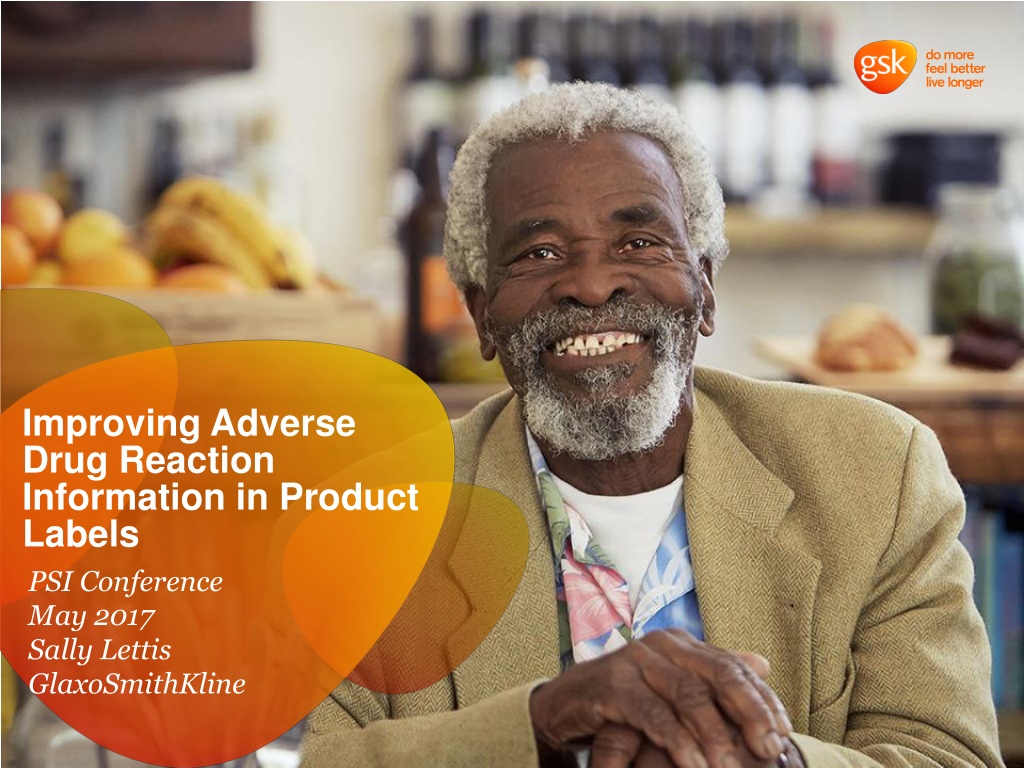
 undefined
undefined









